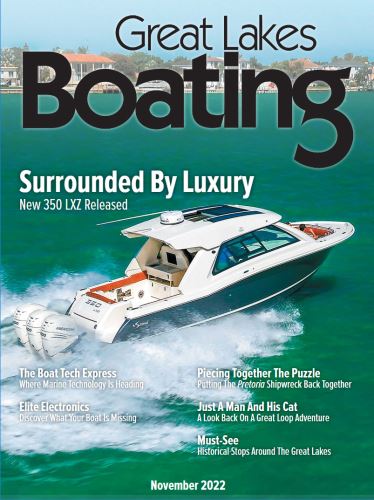.jpg_1600.jpg)
Some Great Lakes sailors head south for the winter looking for blue water and sunshine in the Islands. Others do things like get a new hip. There are some who go outside in the cold weather and shoot ducks. Then there are the ones who head for the ice and sail really fast…these are the ones who race on iceboats. As this article is being written, the 2017 – 2018 winter season is just beginning. So-called “hard water” sailors have begun the task of pulling their boats down from the rafters and getting the cobwebs of summer cleared away.
The season began in earnest the first weekend of December with the DN Western Challenge, although there were boats on the ice in Western Wisconsin and Minnesota the weekend before Thanksgiving. While all sailing is somewhat weather dependent, scheduling an iceboat regatta has the additional requirement of good ice. Many regattas are scheduled and may be postponed if the ice conditions are not suitable. If the ice is not good, the regatta may be postponed week to week. The lighter DN sailors will look for 4 to 5 inches of good smooth ice and the larger class of boats need 6 or more inches. These boats are strictly wind-powered and need the ice to be relatively snow-free. As with all sailing, safety is always at the forefront of ice boating. Along with the speeds of these boats there is also the cold weather and the fact that you are sailing on ice. Sailing in cold weather at high speeds is inherently dangerous. It is important to wear the appropriate protective clothing, be aware of where the possible soft spots are in the ice and never go out on the ice alone. Just as when sailing in the summer, respect the lake in the winter as well.
Boat Details
The DN iceboat is the most popular of the various designs. This is a one-person boat 12 feet in length, 8 feet wide with a mast of 16 feet carrying 60 square feet of sail over a narrow cockpit and three steel blades in a tricycle style arrangement. It offers excellent performance as well as a lot of competitive sailing. While it may not be quite as fast as some of the bigger ice boats, sailors at all levels of experience find the DN a very satisfying boat. In addition, it is a design that offers true international racing, with active fleets in the US as well as throughout Europe and Russia.
DN stands for Detroit News, where it was designed in 1937 by Archie Arrol, a master craftsman working in the paper’s hobby shop, along with several ice boating friends. Part of the popularity of the DN has to do with how easily transportable they are. They can reach speeds of 60 mph or more in 12 to 15 mph of wind.
How Fast?!
Personally, I thought that a sailboat going 7 mph or more was moving pretty fast. Then again, there is the Skeeter class of ice boat. This is the “Formula One” of ice boats capable of speeds in excess of 100 mph. The only restriction in the Skeeter design is that the sail area is set at a maximum of 75 feet, 2 inches.
The Nite class is enjoying increasing popularity. This is a two-seat side-by-side boat offering good versatility as a day sailor/racer. The Renegade has been a proven performer in one-design racing since its introduction in 1946. The Ice Optimist was created specifically as a boat for the kids. This boat uses the standard Optimist dinghy sail plan that is so widely used in youth sailing programs around the country. Each of these classes of boats has governing organizations and regattas throughout the Great Lakes Region. Many are held on smaller lakes in the region or on the more sheltered bays of the lakes themselves.
Planning Ahead
Imagine how different it is today to plan a regatta on ice than it was 20 or 60 years ago. Today we have cell phones and internet to get the ice conditions out to the sailors. Imagine, 90 years ago, the Toledo Ice Yacht Club would have a Friday night meeting during the winter to communicate ice conditions and talk about weekend race plans. Other smaller organizations would simply pass the word any way possible to get the information out. When asked about the comparison of “hard” water sailing versus “soft” water sailing the answer given most often was the “thrill versus cold.” Certainly there is a thrill in the tremendous speeds that these boats can reach. There is also the camaraderie and social aspects of this sport that will often transcend the events themselves. Another common response to the above question is that ice boating makes one a better helmsperson on the soft water; particularly when driving downwind. To get involved and try out ice boating you need only go the nearest club and ask for a lesson or a ride. Just like those on floating sailboats, hard water sailors are anxious to share the experience and introduce more people of all ages to their sport. Ice boating is just another way to enjoy sailing on the Great Lakes.
Photos by Gretchen Dorian
For More Information
IDNIYRA | www.ice.idniyra.org
Iceboat.org | www.iceboat.org

